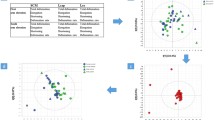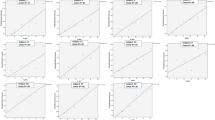Abstract
Neck injuries are significant causes of morbidity and mortality, and their chronic forms due to repetitive or sustained physical acts (e.g., prolonged use of mobile phone with a dropped head) are becoming increasingly more prevalent. Many injuries are preventable but the prevention and control requires a clear basic understanding of the neck biomechanics. In this paper, we describe a first-of-its-kind study that integrates a gamut of state-of-the-art imaging modalities (dynamic radiography, computed tomography (CT), and magnetic resonance imaging (MRI)) and biodynamic measurements (motion capture, electromyography (EMG), force sensing), thereby investigating holistically the in vivo responses of the neck and its various interconnected musculoskeletal components during functional activities. We present a sample of findings to illustrate how the integrations at multiple levels can enable creating truly subject-specific neck musculoskeletal models and attaining novel insights that otherwise would be unattainable by a singular or subset of approaches.
Similar content being viewed by others
References
Hurwitz E L, Randhawa K, Yu H, et al. The global spine care initiative: A summary of the global burden of low back and neck pain studies. Eur Spine J, 2018, 27: 796–801
Côté P, van der Velde G, David Cassidy J, et al. The burden and determinants of neck pain in workers. Eur Spine J, 2008, 17: 60–74
Lau K T, Cheung K Y, Chan K B, et al. Relationships between sagittal postures of thoracic and cervical spine, presence of neck pain, neck pain severity and disability. Manual Ther, 2010, 15: 457–462
Silva A G, Punt T D, Sharples P, et al. Head posture and neck pain of chronic nontraumatic origin: A comparison between patients and pain-free persons. Arch Phys Med Rehab, 2009, 90: 669–674
Yip CHT, Chiu T T W, Poon A T K. The relationship between head posture and severity and disability of patients with neck pain. Manual Ther, 2008, 13: 148–154
Ariëns G A, Bongers P M, Douwes M, et al. Are neck flexion, neck rotation, and sitting at work risk factors for neck pain? Results of a prospective cohort study. Occup Environ Med, 2001, 58: 200–207
Harms-Ringdahl K, Ekholm J, Schüldt K, et al. Load moments and myoelectric activity when the cervical spine is held in full flexion and extension. Ergonomics, 1986, 29: 1539–1552
Chaffin D B. Localized muscle fatigue—Definition and measurement. J Occup Environ Med, 1973, 15: 346–354
Alzarea B K, Santosh R P. Mobile phone head and neck pain syndrome: Proposal of a new entity. Oral Health Dent Manag, 2015, 14: 313–317
Kim M S. Influence of neck pain on cervical movement in the sagittal plane during smartphone use. J Phys Ther Sci, 2015, 27: 15–17
McAtamney L, Nigel Corlett E. RULA: A survey method for the investigation of work-related upper limb disorders. Appl Ergon, 1993, 24: 91–99
Panjabi M M, Cholewicki J, Nibu K, et al. Mechanism of whiplash injury. Clin Biomech, 1998, 13: 239–249
Vasavada A N, Li S, Delp S L. Three-dimensional isometric strength of neck muscles in humans. Spine, 2001, 26: 1904–1909
Nimbarte A D, Zreiqat M M, Chowdhury S K. Cervical flexionrelaxation response to neck muscle fatigue in males and females. J Electromyogr Kines, 2014, 24: 965–971
Vasavada A N, Nevins D D, Monda S M, et al. Gravitational demand on the neck musculature during tablet computer use. Ergonomics, 2015, 58: 990–1004
Alizadeh M, Knapik G G, Dufour J S, et al. An EMG-driven biomechanical model of the canine cervical spine. J Electromyogr Kines, 2017, 32: 101–109
Sommerich C M, Joines S M B, Hermans V, et al. Use of surface electromyography to estimate neck muscle activity. J Electromyogr Kines, 2000, 10: 377–398
Anderst W J, Lee J Y, Donaldson Iii W F, et al. Six-degrees-of-freedom cervical spine range of motion during dynamic flexion-extension after single-level anterior arthrodesis. J Bone Joint Surgery, 2013, 95: 497–506
Anderst W J, Baillargeon E, Donaldson Iii W F, et al. Validation of a noninvasive technique to precisely measure in vivo three-dimensional cervical spine movement. Spine, 2011, 36: E393–E400
Anderst W, Zauel R, Bishop J, et al. Validation of three-dimensional model-based tibio-femoral tracking during running. Med Eng Phys, 2009, 31: 10–16
Bey M J, Zauel R, Brock S K, et al. Validation of a new model-based tracking technique for measuring three-dimensional, in vivo glenohumeral joint kinematics. J Biomech Eng, 2006, 128: 604–609
Panjabi M M, Crisco J J, Vasavada A, et al. Mechanical properties of the human cervical spine as shown by three-dimensional load-displacement curves. Spine, 2001, 26: 2692–2700
Delp S L, Anderson F C, Arnold A S, et al. OpenSim: Open-source software to create and analyze dynamic simulations of movement. IEEE Trans Biomed Eng, 2007, 54: 1940–1950
Seth A, Sherman M, Reinbolt J A, et al. OpenSim: A musculoskeletal modeling and simulation framework for in silico investigations and exchange. Procedia Iutam, 2011, 2: 212–232
Author information
Authors and Affiliations
Corresponding author
Additional information
This work was supported by a research grant from the Centers for Disease Control and Prevention/National Institute for Occupational Safety and Health (Grant No. R01OH010587). Technical assistances provided by Dr. William Anderst of Department of Orthopaedic Surgery and Dr. Chan-Hong Moon of Department of Radiology at University of Pittsburgh Medical Center are acknowledged.
Rights and permissions
About this article
Cite this article
Zhou, Y., Chowdhury, S., Reddy, C. et al. A state-of-the-art integrative approach to studying neck biomechanics in vivo. Sci. China Technol. Sci. 63, 1235–1246 (2020). https://doi.org/10.1007/s11431-020-1672-x
Received:
Accepted:
Published:
Issue Date:
DOI: https://doi.org/10.1007/s11431-020-1672-x




